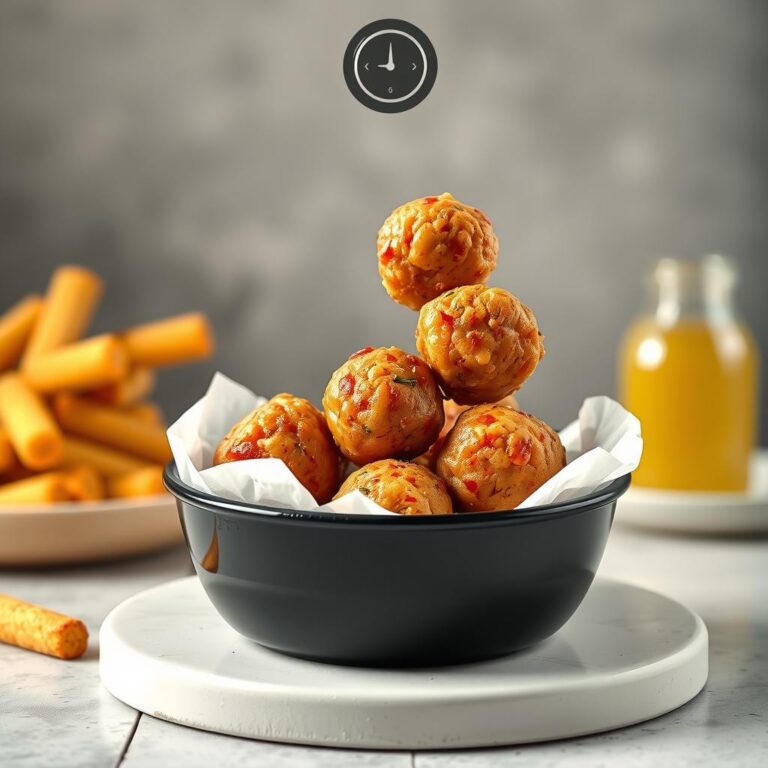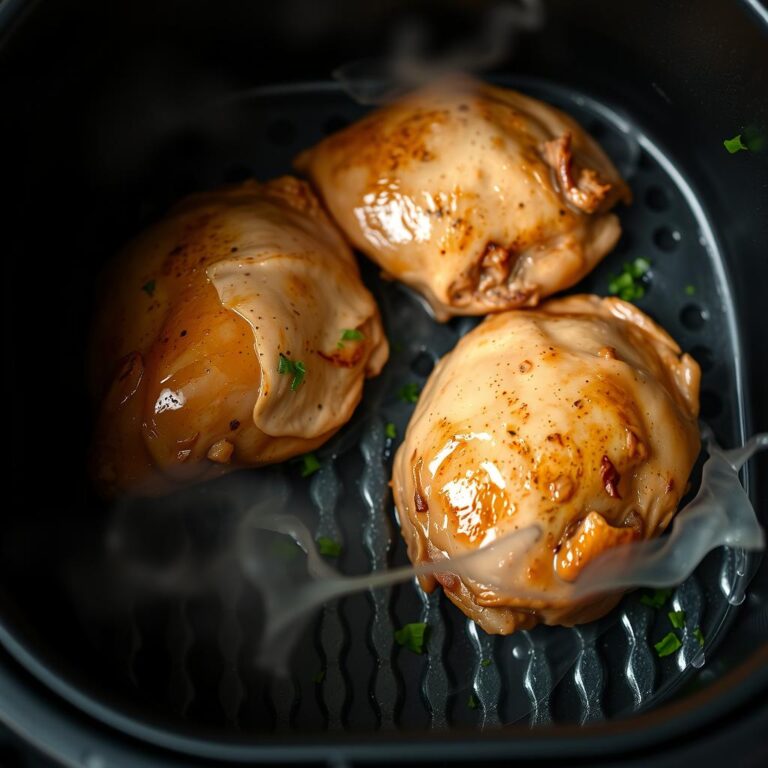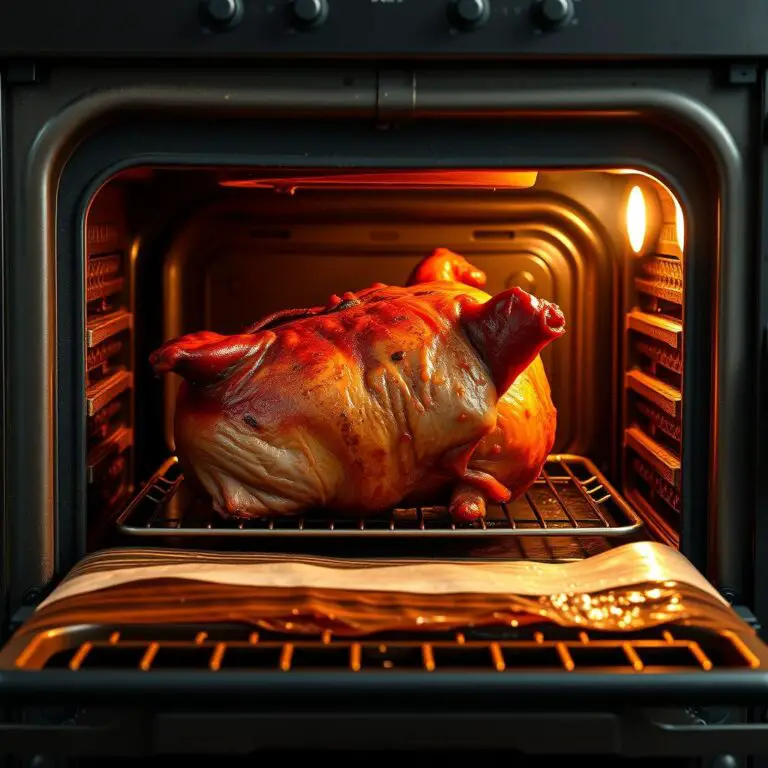Can you cook roast beef from frozen?
That's the question on your mind, right?
Let's get straight to it.
Roast beef, that juicy, tender cut of meat, is a classic for a reason.
But life happens, and sometimes you forget to thaw that beautiful roast.
So, can you actually cook roast beef straight from the freezer?
It's a question worth exploring because nobody wants to ditch their dinner plans.
The Frozen Roast Beef Dilemma: Is It Possible?
You're staring at a rock-solid roast, thinking, "There's got to be a way".
I get it.
We've all been there, facing the frozen beast that was supposed to be a delicious meal.
The USDA guidelines generally advise against cooking large cuts of meat like roast beef from frozen.
They say thawing is crucial for even cooking and food safety.
But let's be real, rules are sometimes meant to be bent (carefully, of course).
Why Thawing is Usually Recommended for Roast Beef
Think about it: thawing aims for consistent cooking.
A thawed roast cooks evenly because the temperature is uniform throughout the cut.
When you skip thawing, the outside cooks much faster than the inside.
You risk ending up with a well-done exterior and a raw or undercooked center when cooking a frozen roast.
Nobody wants that.
Thawing helps prevent this unevenness, ensuring a more enjoyable roast beef experience.
This usually takes a day or two in the refrigerator.
The Potential Pitfalls of Cooking Frozen Roast Beef
Besides uneven cooking, there are other things to consider.
-
Longer Cooking Time: Expect a significantly longer cooking time if you're starting with a frozen roast.
-
Texture Issues: The texture of the meat might not be as tender as if it were properly thawed.
-
Food Safety Concerns: The outside of the roast might reach a safe temperature while the inside remains in the danger zone for bacteria growth.
Can You Cook Roast Beef from Frozen? My Take.
So, can you do it?
Technically, yes, you can cook roast beef from frozen.
But should you?
That's where it gets tricky.
It's not the ideal scenario, but I get it, sometimes you have to work with what you've got.
If you must cook your roast beef from frozen, proceed with caution and understand the risks involved.
Can you cook roast beef from frozen? That's what we're tackling.
Cooking Frozen Roast Beef: A Risky Game?
Okay, so you're thinking of cooking roast beef from frozen.
It's doable, but I won't lie, it's not the path to roast beef perfection.
Think of it like this: you're trading convenience for control.
You're giving up some of the fine-tuning you'd usually have with a thawed roast.
Strategies for Cooking Roast Beef From Frozen (If You Must)
Alright, you're determined to cook that frozen roast beef.
Let's talk strategy, this is how you can make the best of the situation, I'll provide some techniques.
Here’s the deal:
-
Low and Slow is Your Friend: Crank up your oven for a longer cook time, but dial down the temperature.
- We're talking low and slow cooking here, a lower temperature helps the roast cook more evenly.
- This means the roast will take longer, but hopefully, the inside will catch up with the outside.
-
Embrace the Instant Pot: An electric pressure cooker like an Instant Pot can be your savior.
- It cooks food quickly, which can help get that frozen center up to temp faster.
- Follow a recipe specifically designed for cooking frozen roast beef in a pressure cooker.
-
Seasoning is Key: Don't skimp on the seasoning.
- A frozen roast can be a bit bland, so go heavy on the salt, pepper, garlic powder, onion powder, or whatever spices you like.
- The surface temperature can impact the flavor profile.
-
Use a Reliable Meat Thermometer: This is non-negotiable.
- You need to know the internal temperature of the roast to ensure it's cooked safely.
- Insert the thermometer into the thickest part of the roast, avoid bone areas for an accurate read.
- Refer to USDA guidelines for minimum internal temperatures.
- Your focus is food safety.
-
Expect a Longer Cooking Time: Add at least 50% to the regular cooking time for a thawed roast.
- Keep an eye on it, though, as cooking times can vary.
- Patience is key when cooking frozen beef roast.
-
Consider Searing First: Searing the frozen roast in a hot pan before roasting can help develop some flavor and color on the outside.
- It’s an extra step, but it can make a difference.
- This will create a better texture profile than without searing.
Thawing Roast Beef: The Safer, Saner Option
Look, I get it, sometimes you're in a rush, but, I always recommend thawing before cooking roast beef.
Here's why:
-
Even Cooking: The main advantage of thawing is even cooking.
- A thawed roast cooks more consistently, resulting in a more tender and flavorful product.
-
Better Texture: Thawing allows the meat fibers to relax, resulting in a more tender texture.
-
Food Safety: Thawing ensures that the entire roast reaches a safe internal temperature during cooking, minimizing the risk of bacterial growth.
Here are the safest ways to thaw a roast:
-
In the Refrigerator: This is the safest and most recommended method.
- It takes time, allow several hours per pound of meat, but it's worth it.
- Place the roast on a plate or in a container to catch any drips.
-
In Cold Water: This method is faster than refrigerator thawing, but requires more attention.
- Submerge the roast in a leak-proof bag in cold water, changing the water every 30 minutes.
- Plan to cook the roast immediately after thawing using this method.
What Cut of Roast Beef is Best?
Now, while we're on the subject, let's talk about the cuts of roast beef.
The best cut really depends on your preference and budget.
Here are a few popular options:
-
Ribeye Roast (Prime Rib): This is the king of roasts, known for its marbling and rich flavor.
- It's also one of the most expensive cuts.
-
Tenderloin Roast: This is a very tender cut, but it's also lean, which means it can dry out if overcooked.
- It's best cooked to medium-rare.
-
Top Sirloin Roast: This is a good balance of flavor and tenderness.
- It's a more affordable option than ribeye or tenderloin.
-
Bottom Round Roast: This is a tougher cut, but it can be tenderized with slow cooking methods like braising.
Seasoning Your Roast Beef: Flavor Power
Seasoning can elevate your roast beef from good to great.
Here are some ideas:
-
Simple Salt and Pepper: Sometimes, the classics are the best.
- A generous coating of salt and freshly ground black pepper is all you need to bring out the natural flavor of the beef.
-
Garlic Herb Rub: Combine minced garlic, rosemary, thyme, and olive oil for a flavorful rub.
-
Spicy Southwestern Rub: Mix chili powder, cumin, paprika, and cayenne pepper for a kick.
-
Coffee Rub: Ground coffee, brown sugar, and cocoa powder create a unique and delicious crust.
The Importance of Resting Your Roast
Once your roast beef is cooked, it's crucial to let it rest before slicing.
Resting allows the juices to redistribute throughout the meat, resulting in a more tender and flavorful roast.
Tent the roast loosely with foil and let it rest for at least 15-20 minutes before carving.
Slicing Your Roast Beef: Cut Against The Grain
The way you slice your roast beef can also affect its tenderness.
Always slice against the grain, this means cutting perpendicular to the direction of the muscle fibers.
Slicing against the grain shortens the muscle fibers, making the meat easier to chew.
FAQ on Cooking Roast Beef
-
Can I cook a frozen roast beef in a slow cooker?
- While technically possible, it's not recommended due to food safety concerns.
- Slow cookers cook at low temperatures, which can allow bacteria to grow in the frozen center of the roast.
-
How long does it take to cook a frozen roast beef?
- Expect to add at least 50% to the cooking time for a thawed roast.
- Use a meat thermometer to ensure the roast reaches a safe internal temperature.
-
What's the best internal temperature for roast beef?
- The USDA recommends a minimum internal temperature of 145°F (63°C) for medium-rare roast beef.
- For medium, cook to 160°F (71°C), and for well-done, cook to 170°F (77°C).
Conclusion: Weighing the Risks and Rewards of Cooking Frozen Roast Beef
So, can you cook roast beef from frozen? You now have a more thorough grasp of the risks and rewards.
It's technically feasible, especially when armed with the right knowledge and tools like a meat thermometer and a reliable recipe.
However, thawing is the safer, more reliable route to roast beef bliss.
If you must cook from frozen, proceed with caution and prioritize food safety above all else.
If you decide to cook roast beef from frozen, use the advice above.






